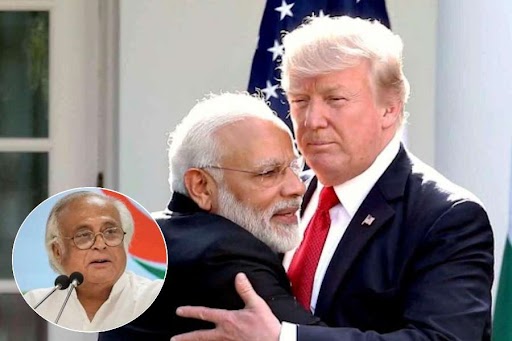There is a curious rightness to marking in Calcutta’s great daily the arrival of a great Calcutta novel. I can’t remember the last time I read a book as grand as Ruchir Joshi’s Great Eastern Hotel. On second thoughts, ‘grand’ is right for the scale of the novel but it suggests a stateliness that doesn’t quite fit the intimacy of its storytelling. Joshi’s novel about Calcutta in the 1940s takes the great happenings of that hinge decade — the death of Tagore, a world war, the threat of a Japanese invasion, the famine of 1942, an impending partition — and turns History’s chapter headings into a city of stories whose lead characters help make that history even as they are made by it.
Having read this nine-hundred-page novel in three days with one eye (because of a cataract operation), I tried to understand how this long book managed such narrative momentum. It’s divided into eight main sections and nearly every section plays out in a single day. If there was ever a novel committed to the canonical unity of time and place, it has to be this one. Here the place is nearly always Calcutta and its hinterland. The lives of the novel’s principal characters unspool together on the chosen day in each section, meeting, diverging and then coming together again. The effect of this superbly managed simultaneity is to create in the reader’s mind the sense of a world in motion.
The central characters in the novel are young, in their twenties or early thirties, with their lives ahead of them. Imogen is posh, English and in love. Andrew, her lover, is a military officer, attached to a secret intelligence unit called the Ochterlony Section that operates out of the Great Eastern Hotel. The fear of a Japanese invasion is so palpable in the minds of the British and US military in Calcutta that it’s almost a character in its own right.
Kedar, the randy young zamindar with a yen for art, grows in the course of the novel into a pivotal character. Niru, who sets the novel in motion, is an earnest young comrade who shares a shabby apartment with two other young girls whose politics differ from hers. Gopal, the apprentice pickpocket, grows into one of the great criminal characters in fiction. He and his criminal mentors — Aurangzeb, Gourangzeb and Ustad — are so ripely sinister that they make Fagin and his troupe from that other city of Empire seem cosy.
Joshi allows the reader a glimpse into the future of these characters by working into the book a sutradhar character who is connected to the main story but located in the Seventies. He is both a character and a storytelling device and part of the magic of this book is that he doesn’t seem like an authorial intrusion. He gives the book a temporal depth that it might have otherwise lacked.
It is not unusual for the natives of this great city to lament its republican decline. Joshi’s novel is, amongst other things, an act of restoration. Never has a city at a particular moment been described so intently, in such vivid physical detail, from land, air and water. This is literally the case. Lambert, an RAF pilot attached to the intelligence section in the hotel, does daily surveillance flights to assess the threat from the Japanese in the east. We see Calcutta and its hinterland through his eyes and his photographs in rapturous detail, detail that never seems tedious landscape writing because the city in this novel is a living thing.
Gopal supplies a travelling account of the Bengal countryside in the time of famine as he takes a ferry headed towards Dhaka, fleeing the policemen pursuing him. He sees bicycles destroyed and abandoned, boats holed and piled up in heaps, grim signs of the scorched earth policy put in place by the raj to deny the Japanese army easy transportation.
Tagore’s death is described by Imogen, Gopal and Kedar separately at street level as they walk their way through the city in the aftermath of the great man’s passing, all of them caught up in the spasm of mourning and curiosity sparked off by his funeral. Niru describes it from the rooftop of an apartment building. Imogen gets a sense of the scale of mourning when she encounters the river of chappals slipped off at the gates of Jorasanko, Tagore’s ancestral home: “She can now see there are layers and layers of them, pulling away from her, turning the corner of the street and catching sunlight as if a giant with millions of small feet has rushed off to a party. It’s not what she has been expecting. She has come because she is taken by an idea of literature, but this is not how she had imagined it before setting off. The death of a poet should have been something gentler, smaller, more within the rhyme and meter of propriety.”
Lines from Tagore’s songs annotate the action of the novel like margin glosses. One of the achievements of the book is the easy way in which it switches between Bengali, Hindi and English without making the desi phrases seem like garnish. The great challenge of writing in English about a world that doesn’t occur in English is mitigating the inevitable loss of inwardness. As a reader who is an outsider to both the city and Bengali, I found my experience of the book was lit up by its interlingual liberties. Also the Great Eastern Hotel is one of the few Indian novels in English that manages to render desi inflections in spoken English invisibly, without caricature.
Perhaps the signal achievement of this remarkable novel is the tenderness with which it follows the lives of the young women who carry the story. Niru, Roma and Titir, the trio of middle-class girls living together in a kind of sketchy commune, represent three different political tendencies and their politics shape their decisions and their lives. But it isn’t their politics that makes their story special, it is the empathy with which their affections, their rivalries, their gossip, their romances and their camaraderie are described that gets the reader to take sides in the novel, to root for the characters that live in its pages. It isn’t just bhadralok women that the novel foregrounds; some of the sharpest and funniest set pieces in the novel feature Sheyali and Radhuni, two clever, worldly prostitutes, who help us experience the riots and ructions of the Forties at a remove from respectability.
But nine hundred pages? This takes us into War and Peace territory; the very length of the novel is a kind of presumption. Mileage will vary; for me, the length was a blessing. I got to know what happened to everyone in the end, something that sparer novels don’t always attend to; there was room to tie up loose ends and the time to become attached to the city and its characters with an intensity akin to love.
mukulkesavan@hotmail.com










